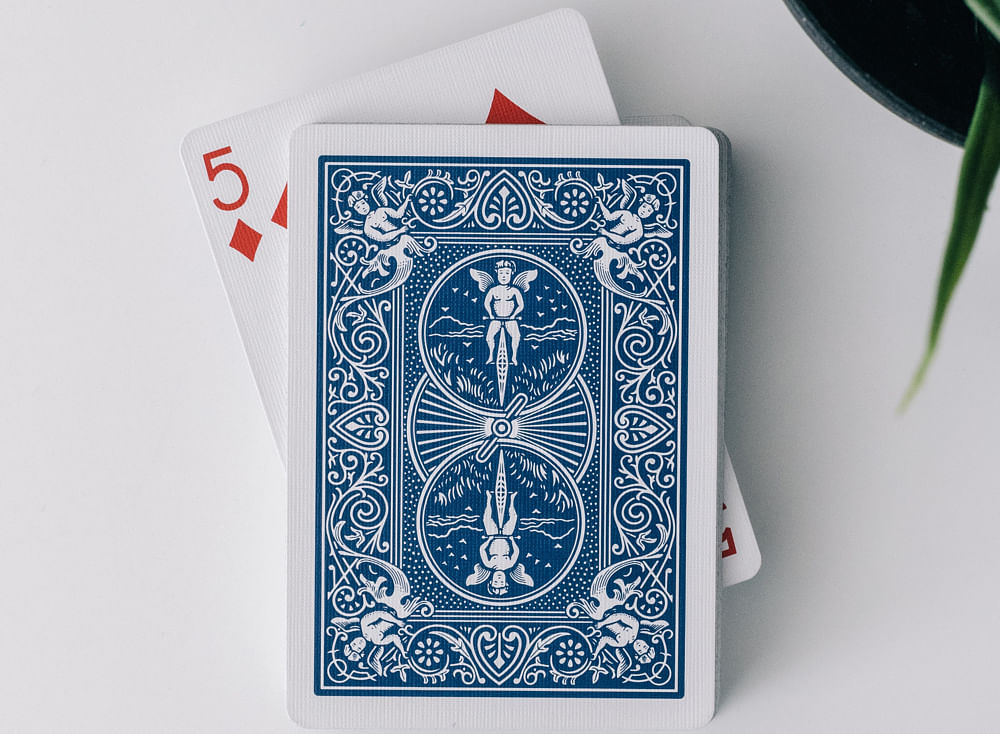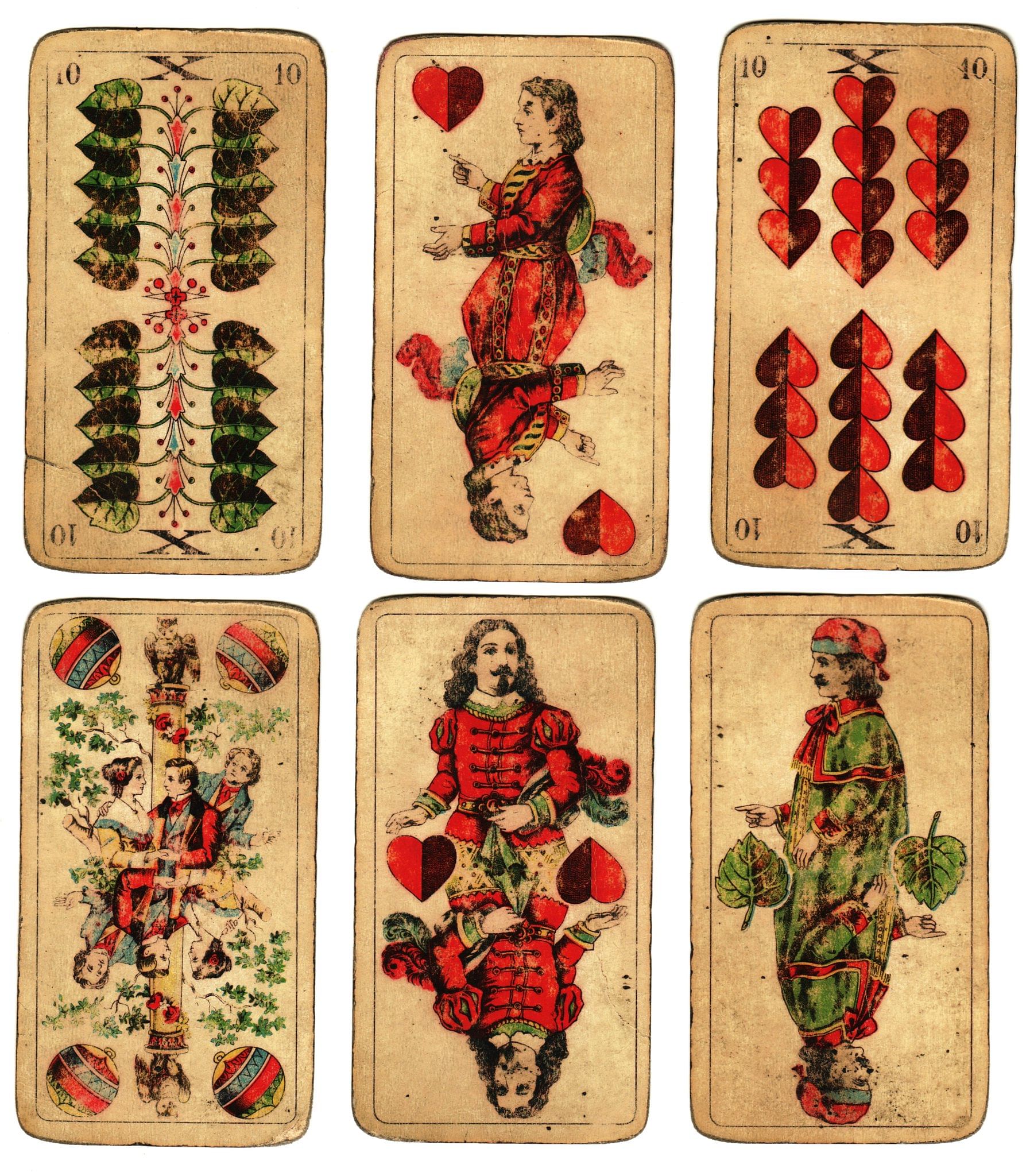The History of Playing Cards
Close your eyes and picture a deck of cards. Did you think of a deck of Red or Blue Bicycle Playing Cards?
Bicycle Cards are the most widely recognized decks of cards in the world and their iconic design is one we take for granted (especially magicians and poker players). The evolution of a modern deck of 52 cards is actually a process that took place over 100s of years and, today, we take an exclusive look at that journey.

The Early History of Playing Cards
The origin of playing cards is a highly-debated topic. Some scholars believe playing cards were developed in China as far back as the 9th century during the era of the Tang Dynasty. Others believe playing cards were developed alongside tile games like dominos or mahjong, or even have connections to chess or dice games. There is even some speculation that playing cards served as “play money” for gambling games before eventually being integrated into the games themselves.
Playing Cards Are Born
However, the earliest confirmed record of playing cards was found in a manuscript written by a German monk named Johannes in 1377. While living in a Swiss monastery, Johannes wrote about the development of playing cards and the variety of card games they could be used for.
The popularity of playing cards continued to grow throughout the end of the 14th century and into the early 15th century. During this time, European cards also introduced the idea of using 4 suits: The Swords, Clubs, Cups and Coins. Sometimes referred to as “Latin Suits”, these suits may have origins in Tarot cards and can still be found on Italian and Spanish playing cards to this day.
The earliest playing cards were stunning, hand-painted masterpieces - particularly the Court Cards. While Italian playing cards featured a standard King, Queen and Knave or Prince (later known as a Jack), Spanish playing cards did not have any Queens or 10s. Since they also didn’t use 8s or 9s for the national game of “Ombre”, most Spanish decks would only have 40 cards.
Widespread Card Manufacturing
Due to their lavish nature, playing cards were typically reserved for the wealthiest and most noble individuals. However, as they became more popular, new methods were invented for producing them quicker and cheaper.
As the availability of playing cards grew, they eventually made landfall in Germany where they spread rapidly thanks to their popularity among soldiers. Using their innovative wood-cutting and engraving techniques, the Germans exponentially improved the ability to produce playing cards in massive quantities. Exporting decks of cards all over Western Europe, Germany eventually became the world’s leading playing card makers.
The Germans also changed the Italian suits to custom images that reflected rural German life: Hearts, Leaves, Acorns and Bells. During this process, the Queens were also replaced with a secondary Jack and the Aces were supplanted by the Twos as the highest card, creating a 48-card deck.
The Development of Modern Suits
During the early 15th century, the French inserted themselves into the lengthy history of playing cards by developing the suit imagery we find on playing cards to this day. Most importantly though, they were also the first to divide the suits into two colors: red and black.
Simplifying the colors and symbols allowed playing card printers to create special stencils that drastically improved card manufacturing speeds. Combined with continued developments in paper manufacturing and enhanced printing processes such as Gutenberg’s printing press in 1440, the manufacturing of playing cards was more efficient than ever. As a result, the French ultimately surpassed the Germans as the world’s playing card powerhouse.

The Rise of English Playing Cards
Heavy taxes in France eventually forced some of the biggest playing card makers to relocate to Belgium. As a result, playing cards began to appear in new parts of Europe, including England where we finally got the English names of the suits that we use today. Combining translations from both the Italian and French designs, the English created the names: Clubs, Hearts, Spades and Diamonds.
The English are also responsible for making the Ace of Spades the most prominent and oft-customized playing card in a standard deck of cards. This all started when a new law prohibited English cards from leaving the factory until the card makers had proved their tax had been paid. Initially, the Ace of Spades had to be hand stamped.
However, in 1828, it was decided a special Ace of Spades would need to be purchased from the Commissioners for Stamp Duties. These unique cards would typically have elaborate designs alongside the manufacturer’s name, a tradition that continues to this day, even after card makers were approved to start printing their own Ace of Spades again in 1862.
In the 1860s, Thomas de la Rue, Founder of the De La Rue printing company, also discovered ways to drastically increase the output and reduce the price of playing cards. As a result of his mass production, the lavish independent artwork often found on playing cards was replaced by the standardized designs we are most familiar with today. This included the introduction of a double-ended court card that prevented card players from having to turn their hand and expose the fact they were holding a court card during a poker game.
The American Effect
In the late 19th century, Americans still had a strong preference for English goods. In fact, some American card makers would even print the word “London” on their Ace of Spades to help drive sales. Among those manufacturers was Lewis I. Cohen.
In 1835, Cohen revolutionized playing card manufacturing with the development of a printing press that could print all four colors at once. He also guided the launch of the New York Consolidated Company in 1871—the company that ultimately introduced the idea of corner indices on their “Squeezers” playing cards so players could see their cards with just a fan.
The United States is also responsible for introducing Jokers to a deck of cards around the year 1860. Initially this card was called the “best-bower” and served as the highest trump card in the massively popular trick-taking game of Euchre. It wasn’t until 1875 that we saw the first instance of a Joker being used as a “wild card” in a game of poker.
Overall, the most important role Americans played in the history of playing cards was helping standardize the design and streamline the manufacturing process for playing cards. Most notably, Russel, Morgan & Co., which later became the United States Playing Card Company.
The USPCC is responsible for developing the most widely-used and recognized playing cards in the world—Bicycle Playing Cards. During their more than 130 year existence, they’ve also absorbed many smaller brands like Bee Playing Cards and Tally-Ho Playing Cards, and are considered by many to be the industry leader for playing cards.
Simply put, the history of playing cards is a long and fascinating journey that we hope you remember and appreciate every time you grab a deck of cards out of your dresser or drawer and sit down for a game of poker or perform your favorite card trick.
In fact, playing cards are still evolving to this day and you can see for yourself with our massive collection of 1,000s of beautiful custom decks of cards.
So now you know all about playing cards. It's time to learn card magic basics, or maybe prop bets. There's also money magic, mentalism, card magic, sleight of hand, or Zoom magic. We're the biggest magic store in the world, so will happily provide you with flash paper or magic books. We love the latest magic tricks and the classics. We run magic conventions too! We're happy to get you to learn magic tricks and how to learn card tricks.
